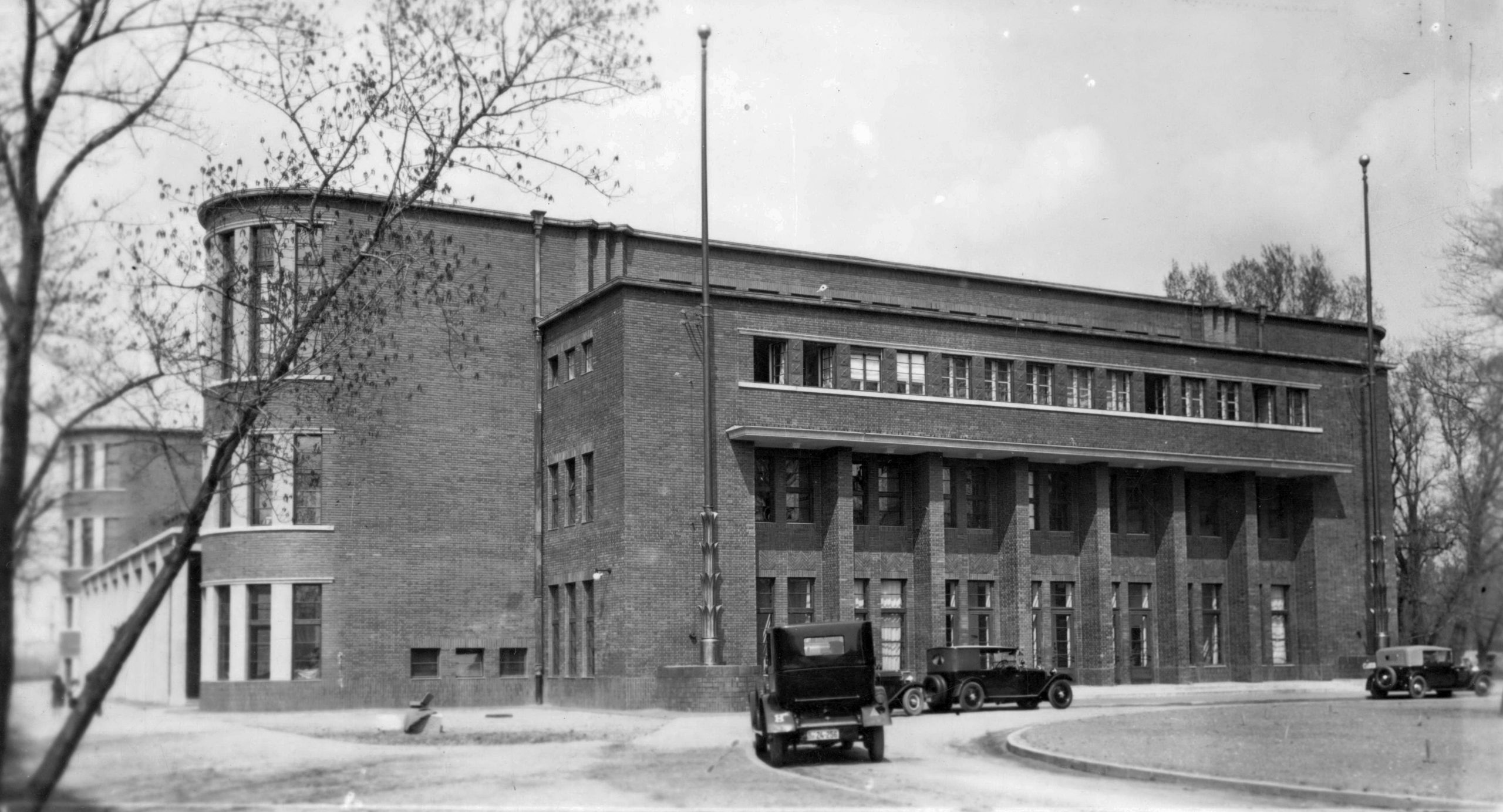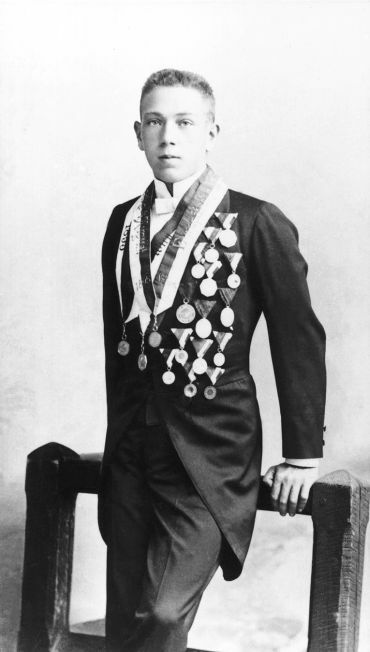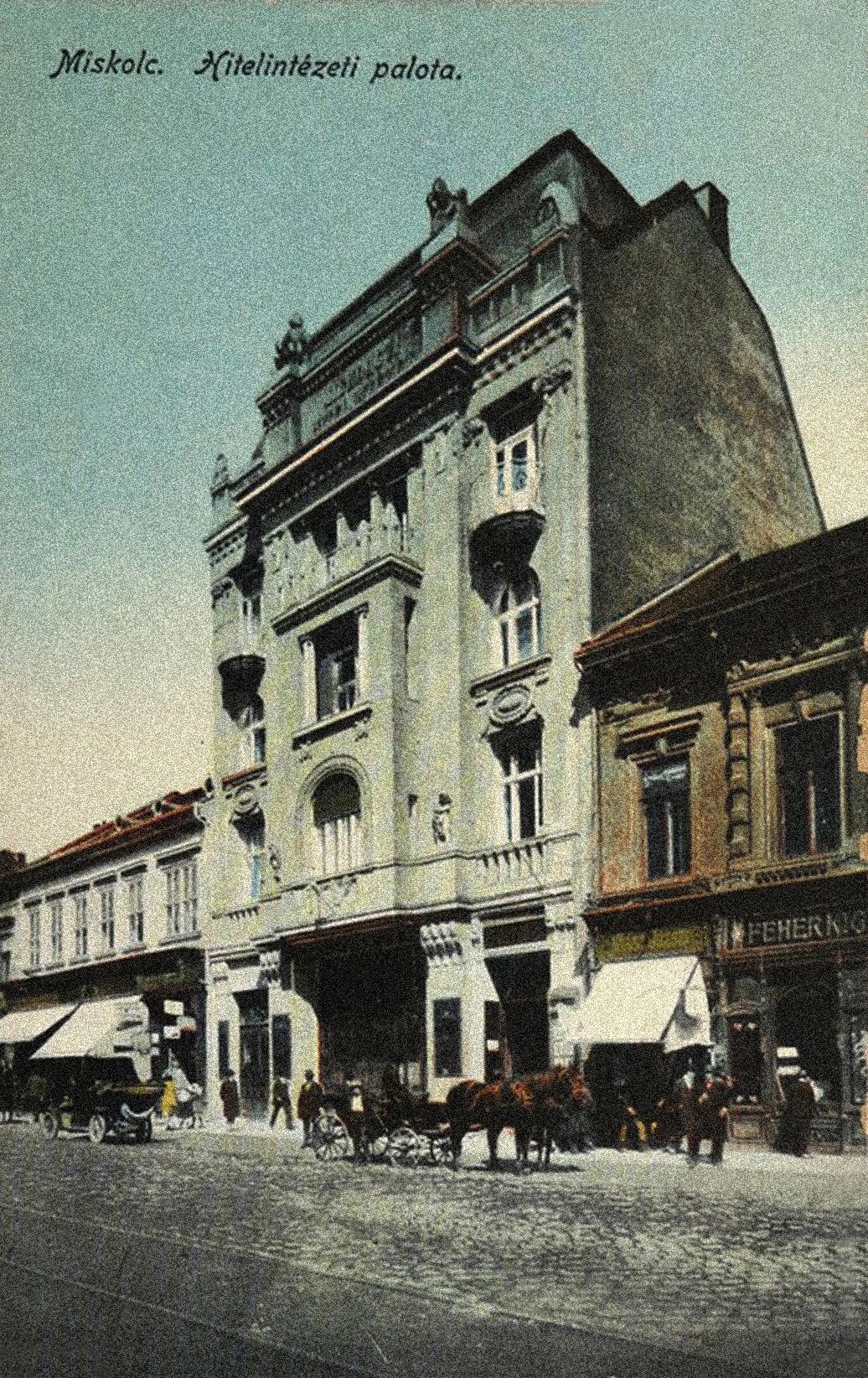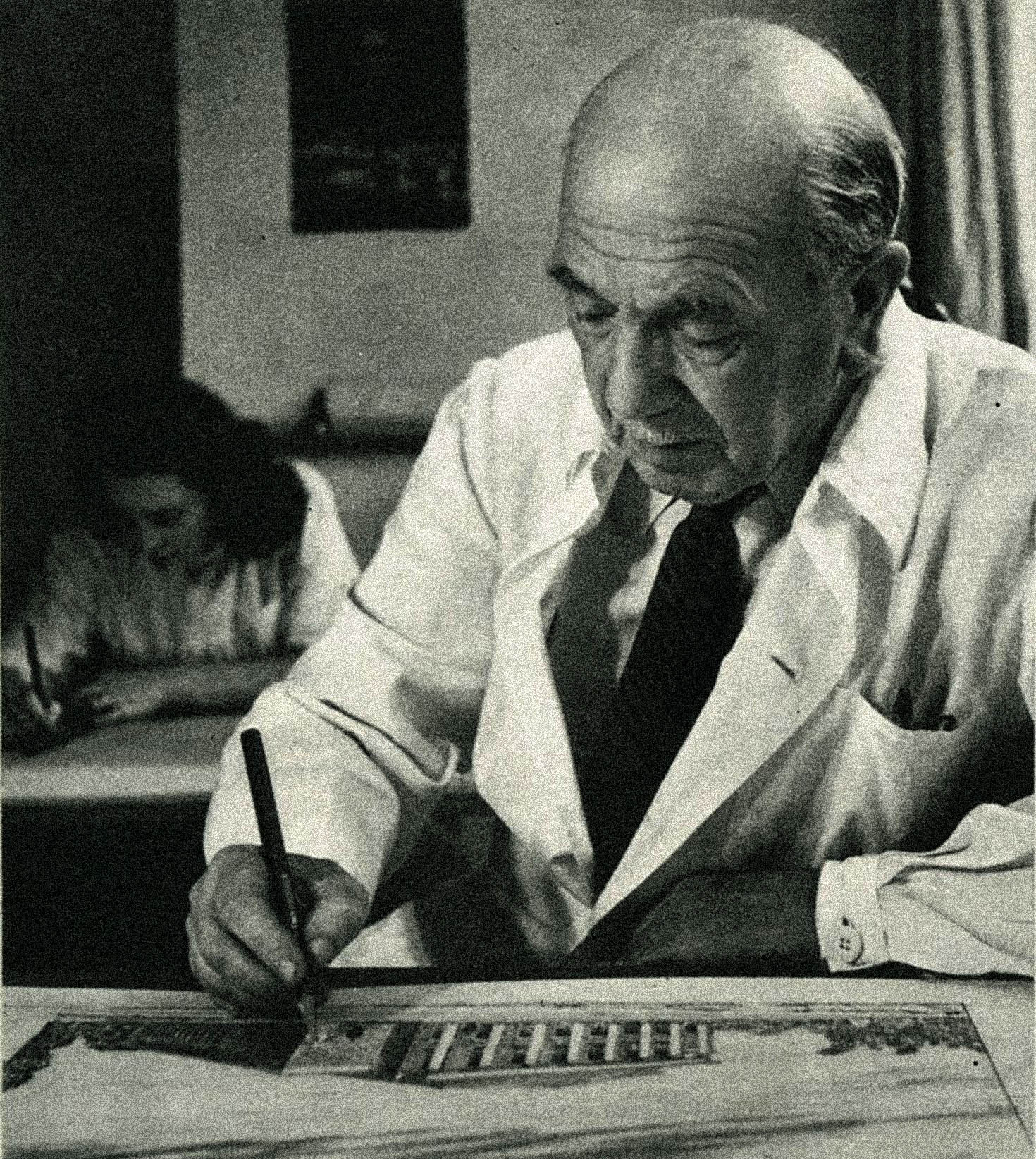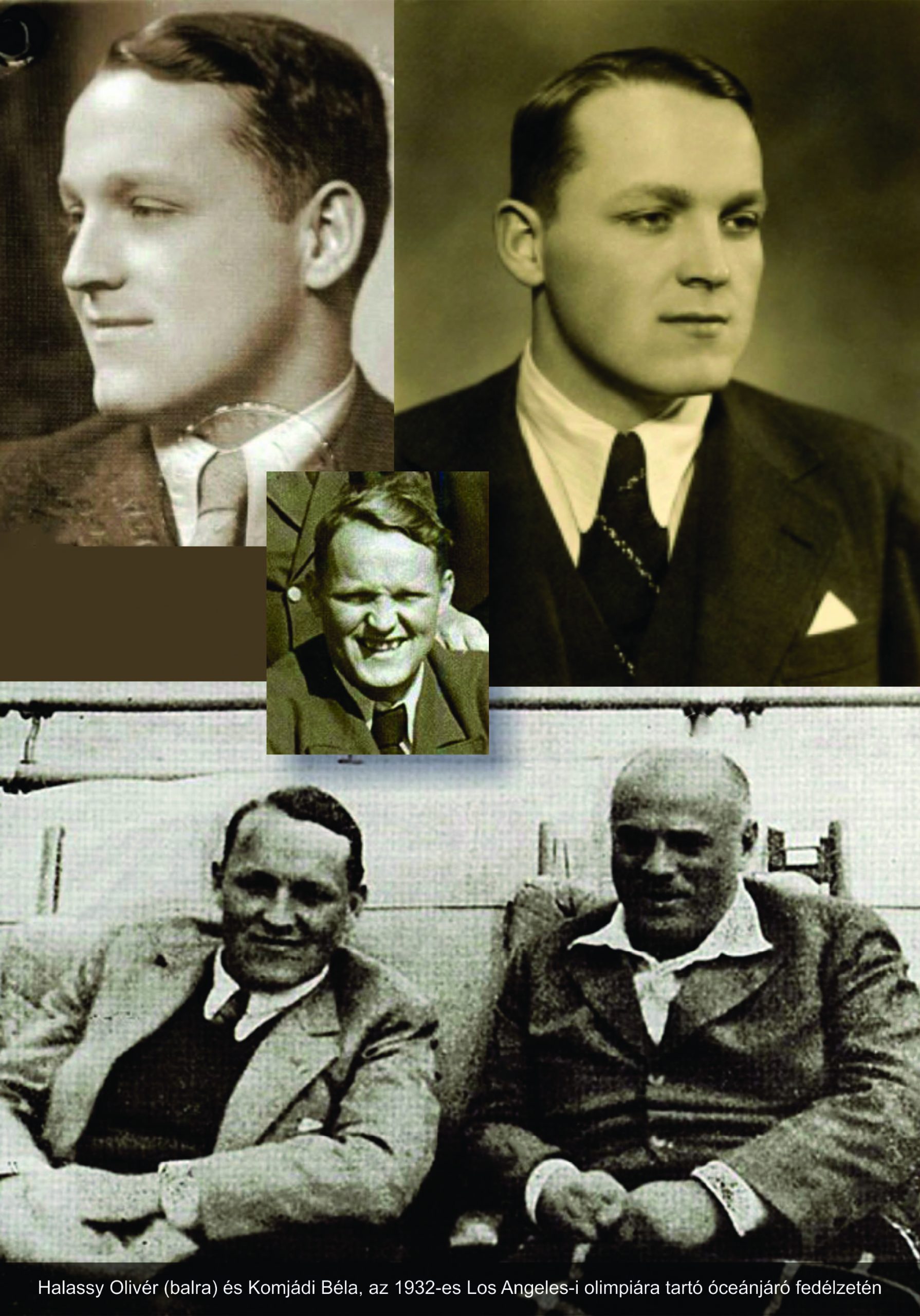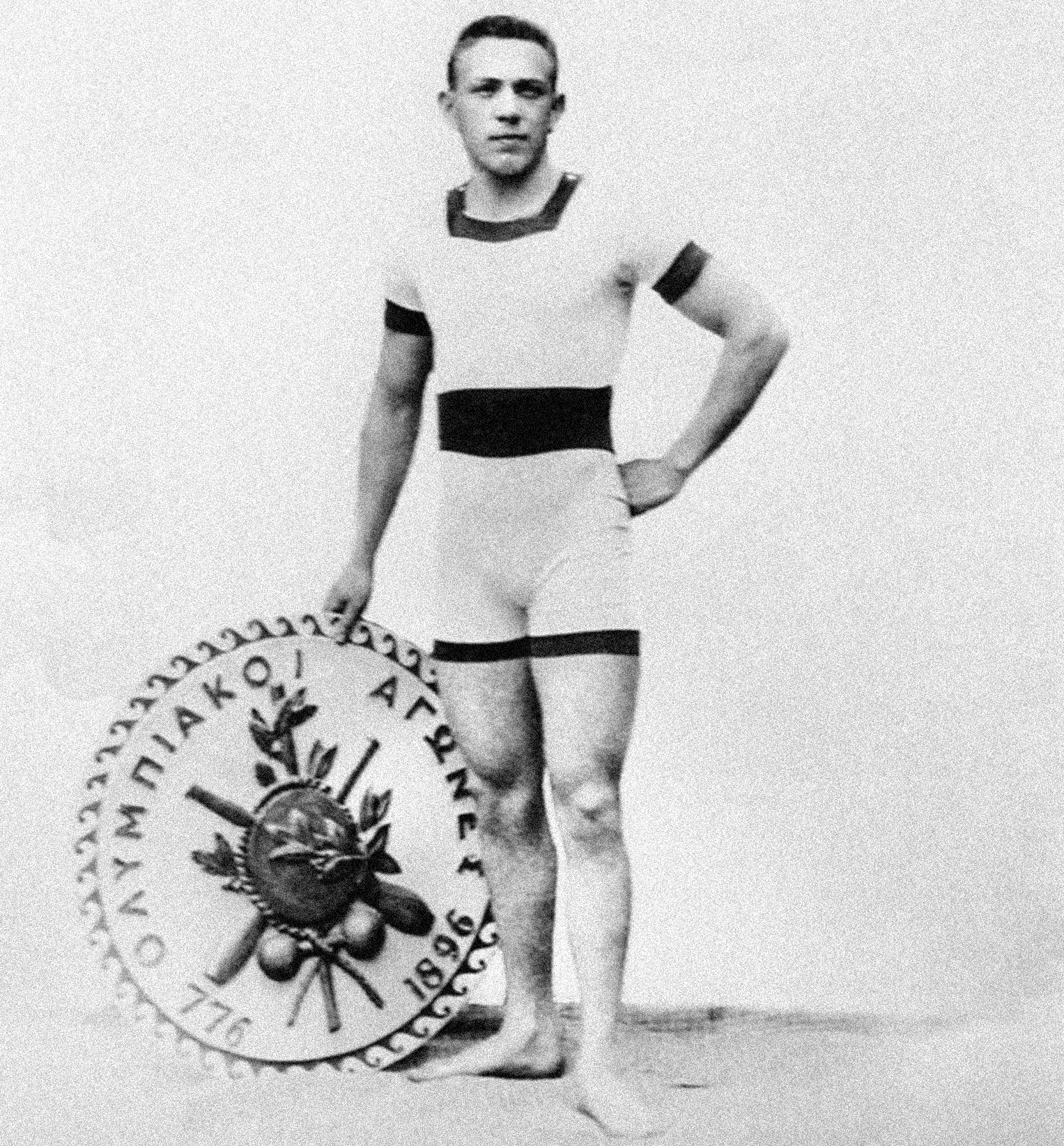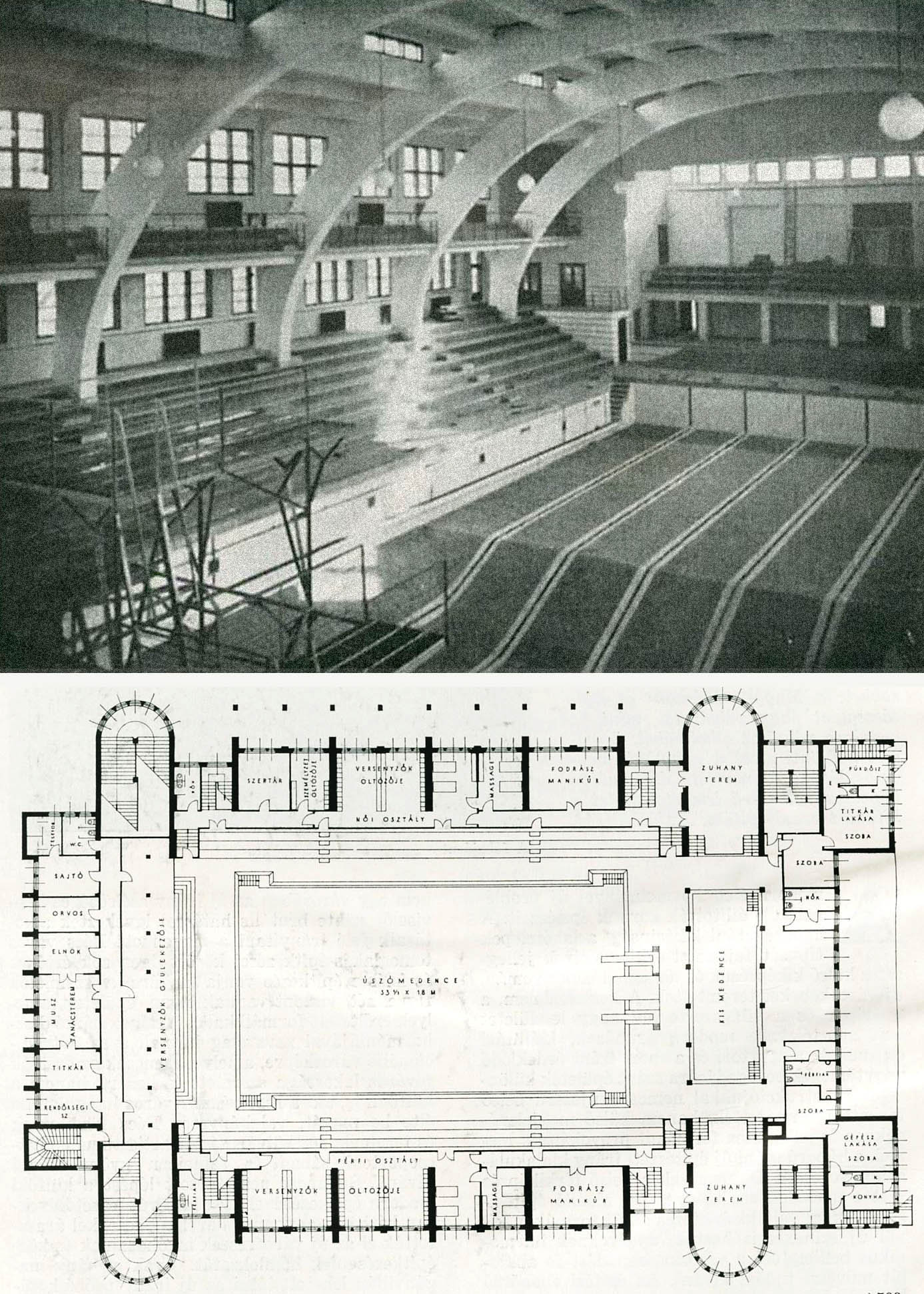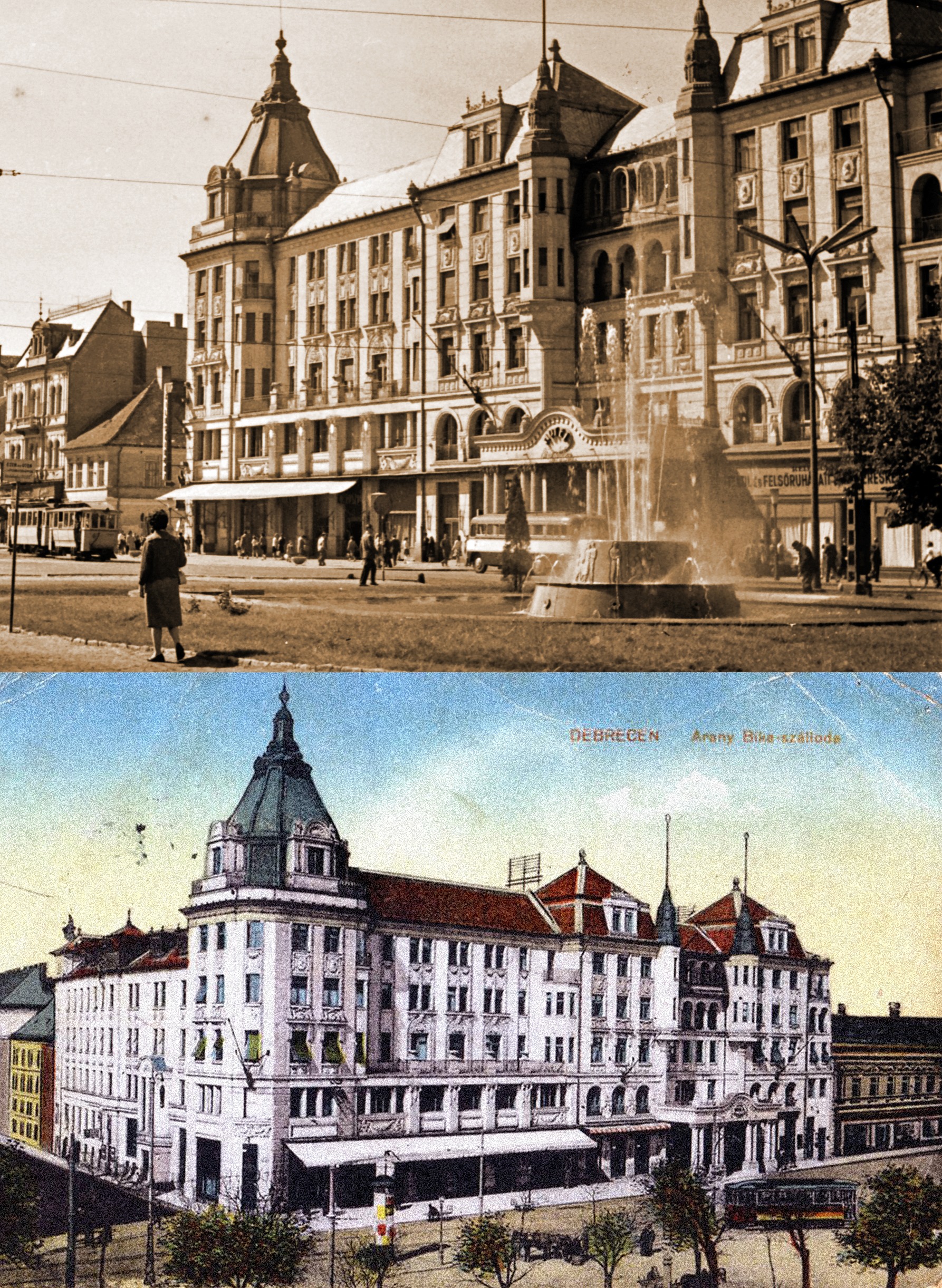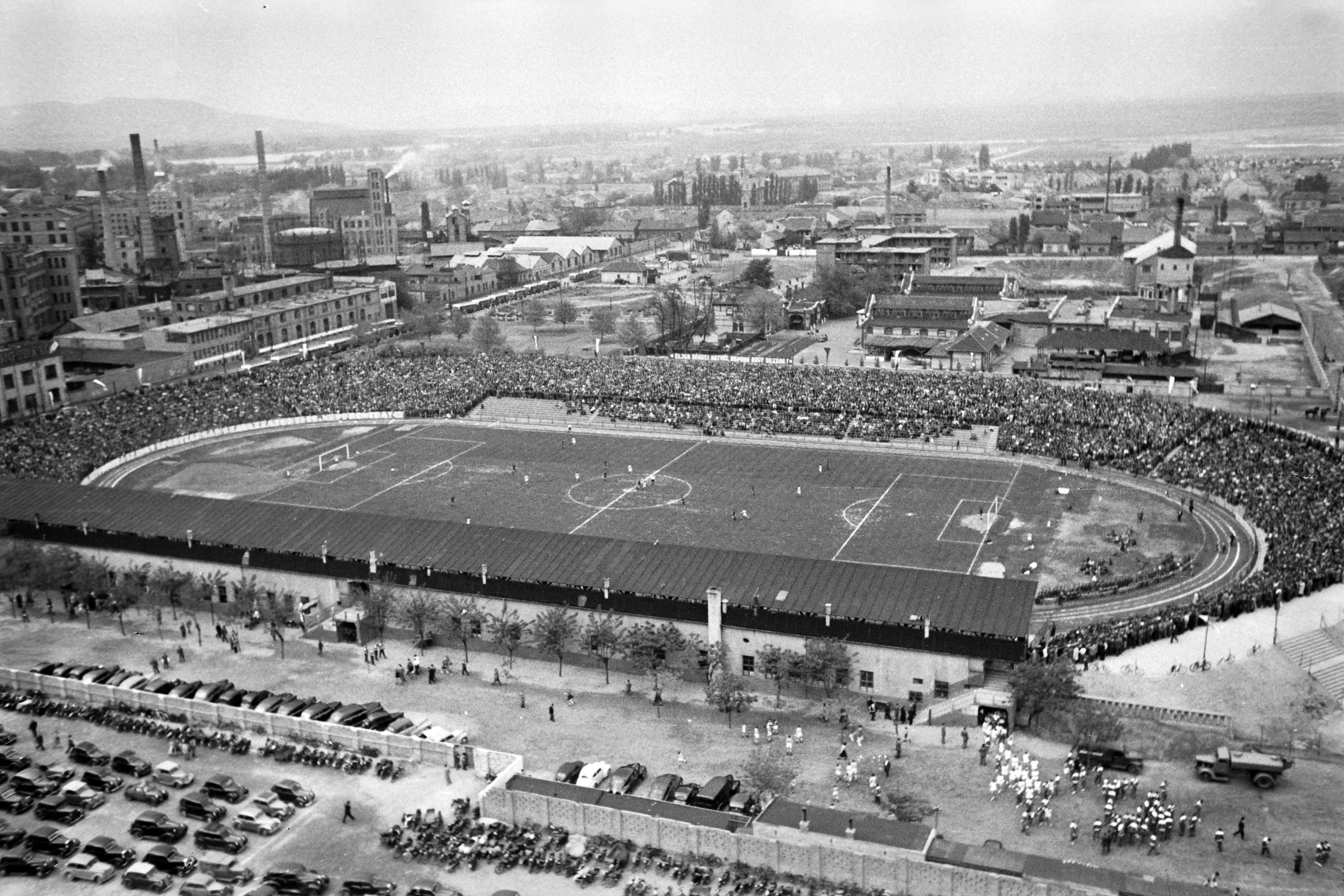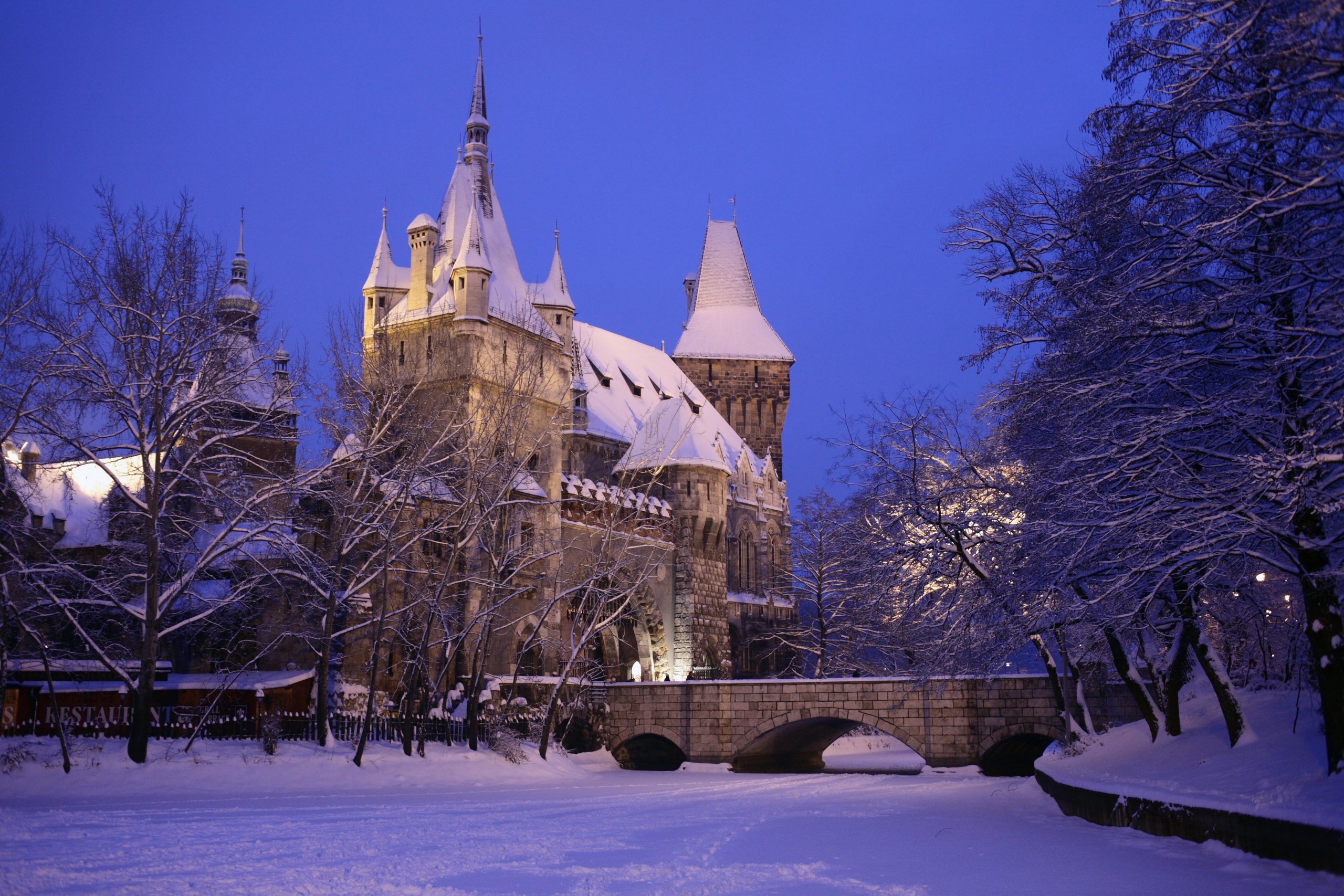1878
Born on 1st February in Budapest, by the name Arnold Guttmann. (His name was Alfréd Hajós from 1906.) His parents were Jakab Guttmann (1840-1891) and Rozália Lőwy (1855-1928), his siblings were Dávid Guttmann, József Guttmann, Miklós Guttmann and Henrik Hajós Guttmann.
1895-1899
Graduated at the Joseph University of Sciences as an architect.
1894-1904
Pursued a career as a sportsman
1899
Career as an architect
1908
Married Vilma Blockner (1881-1950), his son was Endre Hajós (aka Andrew Hargrave, 1910-2000).
1955
Died on 12th November in Budapest.
He started competitive swimming due to a family tragedy?
Alfréd Hajós (Arnold Guttmann) was a swimmer, an athlete and a gymnast as a sportsman. He won medals in ski running, the hurdles and discus throw. He won a championship with the first Hungarian football team. He was four when his father took him to the Schooltz Danube swimming pool where he learnt to swim. The family suffered a horrible tragedy nine years later: his adored father drowned in the Danube. Arnold, the eldest son pledged himself to become an excellent swimmer and win competitions in memory of his father. Five years later, at the age of 18, he already swam at the Olympic Games.
He was the Hungarian Dolphin?
Alfréd Hajós won the first new age Olympics (Athens, 1896) in 100 meters and 1,200 meters swimming too. His times were 1:22.2 and 18:22.2, respectively. He had to cancel his appearance on 500 meters due to the wrong scheduling. Hajós, who used to swim in Rudas Bath, had to compete in 11 degrees Celsius, wavy sea water. He covered his body with suet before the race to protect himself against cold. After the race, he confessed that there and then he was only feeling that he would freeze immediately. In the medal ceremony, the orchestra started playing the national anthem of Austria and the Hungarian flag was only waving because journalist Ferenc Stobbe stole one when they departed “just in case we need one”. “This Hungarian young man is a real dolphin!” – said the Greek crown prince handing over the awards about him. This is how he got the nickname “Hungarian dolphin”.
He became successful in architecture, too?
Having obtained a degree in architecture, Alfréd Hajós worked first for Ignác Alpár and then for Ödön Lechner. He founded his own architecture company jointly with János Villányi in 1907. His first designs showed the influences of his mentors, Eclecticism from Alpár and Art Nouveau from Lechner. They won their first tender with Villányi in 1909: they designed the building of the Borsod County Savings Bank in Miskolc. The design and construction of the renovation of Hotel Aranybika in Debrecen made their company known countrywide.
That he is the only Hungarian person to win olympic medals in arts and sports as well?
Alfréd Hajós had his greatest professional success together with Dezső Lauber at the 1924 Paris Olympic Games, not in sports but in architecture. There were Olympic Games in Arts between 1912 and 1948 in architecture, sculpture, music, painting and literature. Hajós and Lauber, both being sportsmen and architects, won the silver medal with their design for the “Ideal Stadium”. (The gold medal was not awarded.) Since there are no arts Olympics today, he is the only Hungarian person to win Olympic medals in arts and sports too.
He could survive World War II and the holocaust due to his sports results?
Olympic champions could exempt from the effect of the anti-Jewish laws, but this did not work in practice. Many outstanding sportspeople were harassed in the Holocaust. Alfréd Hajós was exempt from the effect of the anti-Jewish laws in the beginning, thanks to his sports results. However, under the arrow cross rule, being an Olympic champion did not matter; he had to hide. Still, he did not primarily try to help save himself, but other Jewish sportspeople. Waterpolo and swimmer Olympic champion Olivér Halassy, who hid several Jewish sportspeople in his house, helped him.
Champion of the Magyar Úszó Egylet (Hungarian Swimming Club) (1894-1896)
Life champion of swimming, Alfréd Hajós joined the newly founded Hungarian Swimming Club in 1894. His career as a swimmer only lasted for three years. As early as this year (1894), he won the 500 meter, so called steady swimming, at the “derby” of the Hungarian Swimming Club held in Lukács Swimming Pool. He easily won all competitions in 1895. (At the swimming derby in Vienna, he won the 100 meter race and at the unofficial European swimming championship held in Vienna too he won the 100 meter freestyle and the 68 meter “complementary race”. On the day following the race he won the Austrian championship, too. He won the international race of the Hungarian Swimming Club in Siófok and the unofficial Hungarian “race of champions”, too. In the preliminary Olympic races he first won the 100 meter then the 500 meter race so the 1000 meter race was not even held because there was only one place for the swimmers. Not much later, however, he said goodbye to swimming and he tried football in his new club, the BTC (Budapest Gymnastics Club). Hajós thanked his success in swimming to the so called Hungarian stroke, i.e. swimming with alternating arms without legwork (kick). (He actually modified the Hungarian stroke: he did some little balancing leg movement at the same time with the arm strokes.)
Budapest Gymnastics Club (1901-1904)
Having arrived home, our first Olympic champion said farewell to swimming and continued his university studies. Meanwhile, in spite of the disapproval of his professors, he won championship medals in ski running, the hurdles and discus throw. Soon, he learnt about a new sport, “football”, which greatly influenced him. He first played in the team of Budapest Gymnastics Club in 1897 as a forward. The team won the championship twice (1901 and 1902); he was the captain and played left inside forward on the first official match of the national team of Hungary against Austria (Vienna, 1902). He finished his active sports career in 1902. He did not go far from sports in the later stage of his life, either. He was the coach of the national football team. The team played three matches under his leadership winning one and having two draws. He was the referee of the Hungarian-Czech match in 1907. Later, he was elected chairman of the Hungarian Football Federation and the Hungarian Swimming Association. He made the starting kick on the match between Hungary and Austria organized on the 50th birthday of Hungarian football on 4th May 1947. He was also the journalist and columnist of Pest Journal (1903-1908) and editor of Sports World (1904-1906). He worked as an advisor to the President of the Hungarian Olympic Committee.
Hajós and Villányi architecture company
János Villányi took Alfréd Hajós as partner in 1904 and they design many buildings of different styles and functions until World War I. Their first design built was the Head Office of the Protestant Church (District 14, Abonyi Street) in Art Nouveau style. The building was constructed by their architecture company between 1908 and 1909 on the basis of the design by Hajós. Alfréd Hajós did not only design the building, but most of the interior equipment. The design and construction of the renovation of Hotel Aranybika in Debrecen was their project too in 1910. They converted the one-storey hotel into a three-storey, three-star hotel built in Art Nouveau style. Their plans included 192 rooms a café on the ground floor, restaurants, a ballroom, bath and theatre. The construction was not even prevented by World War I., so Hotel Aranybika was opened on 4th September 1915. The headquarters of the National Society for the Support of the Blind was built in 1912 on the basis of Alfréd Hajós and János Villányi showing characteristics of Lechner. Hajós successfully took part in several tenders for public buildings which provided him with projects mostly in the country. Amongst others, he designed the bank palace in Subotica, the credit institute palace in Miskolc, the girls’ school in Bratislava, the secondary grammar school in Levoča, the institute for the blind in Szombathely, the swimming pool in Győr and the institutes for the education of mentally handicapped people and sports centers of many country towns. The close relationship of Hajós with sports was first presented in his architectural work in the joint design of Hajós and Villányi submitted for the National Stadium in 1913. World War I. prevented the construction.
He worked independently after World War I.
The construction of stadiums, sports centers and modern sports swimming pools was booming in the 1920’s all over Europe. Alfréd Hajós’ first sports facility design was eventually built. Lipót Aschner invited him to design the football stadium for UTE (Újpest Gymnastics Club). This was the first Hungarian facility named a “stadium”. The sports facility for 200 VIPs and 20 thousand visitors was opened in 1922 in Megyeri Street, which was the most modern stadium in Europe at the time. He won silver medal on the arts competition of the Paris Olympic Games in 1924 with the design of the stadium prepared with Dezső Lauber. The first prize was not awarded. The metropolitan town council announced a tender for an indoor swimming pool in 1929. Alfréd Hajós won the first as well as the third prize at the tender so he had the chance to design the swimming pool. The construction was started on 17th March 1930, and on 4th December there were already competitions in the swimming pool. The national swimming pool was ready, but the case of the national stadium was still left unsolved. Hajós designed six larger and a few smaller sports facilities. Its construction was again prevented by war. (People’s Stadium would only be built in the 1950s at the same place. Hajós was disappointed that none of his designs were used.) He designed many swimming pools and baths: Selyemréti pools in Miskolc (1927), Liget Bath in Szeged (1930), the swimming pool in Balassagyarmat (1935) and the swimming pool in Pünkösdfürdő (1935).
After World War II.
He helped reconstruction after the war. He reconstructed his mentor’s, Ignác Alpár’s damaged buildings, the Vajdahunyad Castle or the Stock Exchange Palace. He was not allowed to open his architect company again. He accepted that with dignity, too. Although he could have retired, he actively worked as an architect until the end of his life. He designed the Holocaust memorial in Kozma Street Cemetery in 1949. He died on 12th November 1955 in Budapest. He rests in the Kozma Street Jewish Cemetery in the family grave. Member of the Hungarian Olympic Committee, Ferenc Mező and Kossuth-Awarded architect Károly Dávid made speeches at his funeral. The grave was declared protected by the National Memorial and Tribute Committee (2005). His autobiography, “This is How I Became and Olympic Champion” was published in 1956, one year after his death. He received high professional and government awards and medals. Golden Diploma for Architects, Gold Medal for Merit in Sports, Diploma of the International Olympic Committee (1949), Hungarian Heritage Award (2002) posthumous Ybl Miklós Award (2010). He is a member of the Hall of Fame of Swimmers. He has been a member of International Jewish Sports Hall of Fame since 1981.
1878.2.1 – 1955.11.12


